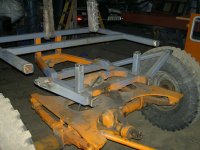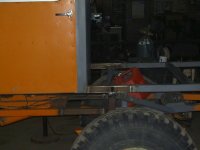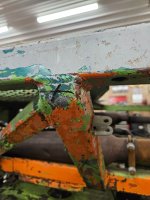Tuckerterra2000
Member
Looking for someone that has a 1644, (or 1544) that would be willing to help me out with some pictures of the interior of their cab (and possibly some measurements?)
I'm in the process of converting my 1642 into a 1644, and all I have to go by is a handful of pictures of 1644s from a distance.
I know I can make it work with the info I have, but would love to get some more information on a few details from a factory design if someone was willing to help me with that.
We can post directly to the Forum or if phone numbers are easier to exchange texts that's fine with me.
I'm in the process of converting my 1642 into a 1644, and all I have to go by is a handful of pictures of 1644s from a distance.
I know I can make it work with the info I have, but would love to get some more information on a few details from a factory design if someone was willing to help me with that.
We can post directly to the Forum or if phone numbers are easier to exchange texts that's fine with me.




